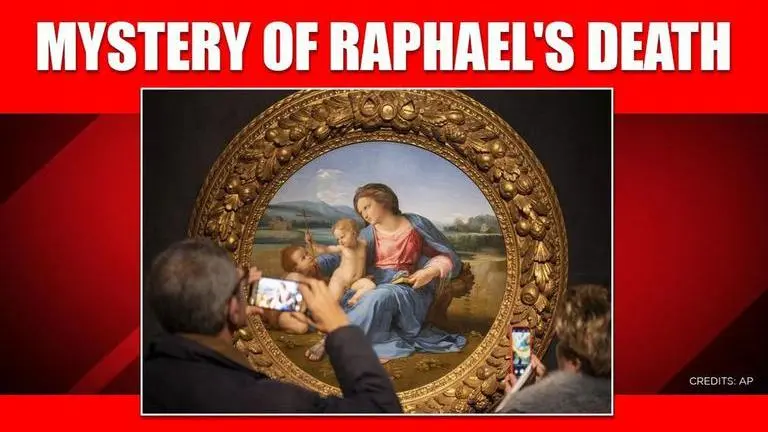Updated 18 July 2020 at 23:45 IST
New study attempts to shed light on celebrated Italian painter Raphael's mysterious death
University of Milan-Bicocca historians have attempted to demystify Raphael's death by reconstructing the circumstances surrounding the event
- Entertainment News
- 3 min read

Italian painter Raphael's untimely death has been a subject of curiosity for generations of art enthusiasts. The Renaissance legend died at the age of 37 in 1520 for reasons unknown to medicine men of the time. However, a recent study conducted by the University of Milan-Bicocca historians attempts to demystify the celebrated painter's death.
Earlier this week, the Italian Society of Internal Medicine (Simi) published the study in its journal wherein researchers detailed on reconstructing the circumstances surrounding Raphael's death.
After ruling out prior theories of malaria, typhoid and syphilis, researchers concluded that the Italian painter was probably suffering from pneumonia and died of 'bloodletting' -- the medieval practice of withdrawing blood as a treatment for infections.
During the course of the study, researchers noted that rudimentary descriptions of the event only mentioned fever as the cause of death while rumours about his indulgent life led to the myth that Raphae died of a sexually transmitted disease.
Advertisement
Raphael's "violent fever”
The final weeks of Raphael's life were documented in the book titled The Lives of the Artists, written by his fellow Italian painter Giorgio Vasari. The University of Milan-Bicocca historians carefully studied the Medieval document in their research.
Vasari, in his book, wrote about Raphael's “violent fever” and how the Renaissance master did not confess the probable cause of the illness to his physicians.
Researchers acknowledged the book for additional information on Raphael’s symptoms, narrowing down the fatal illness as an "acute disease, characterised by high and continuous fever". Furthermore, it was observed that the disease did not lead to immediate death and wasn't severe enough to prevent the painter from preparing his will. Researchers, therefore, concluded death by erroneous bloodletting as the most likely cause of Raphael's sudden demise.
Advertisement
Raphael's 500th anniversary
Several museums are commemorating the 500th anniversary of Raphael's death with exhibitions of his work. Scuderie del Quirinale in Rome has extended its exhibition on works of the Renaissance artist until 30 August due to high demand.
Dubbed as the "greatest exhibition" on Raphael, the show had unfortunately opened just days before Italy went into lockdown due to the COVID-19 pandemic on 8 March. However, the show was reopened on 2 June with precautions in place to contain the spread of coronavirus.
Other the other hand, the National Gallery in London has decided to postpone its 500th-anniversary exhibition of Raphael's complete works until 2022 due to the pandemic.
Published By : Prerna Vijayeni Panda
Published On: 18 July 2020 at 04:54 IST
